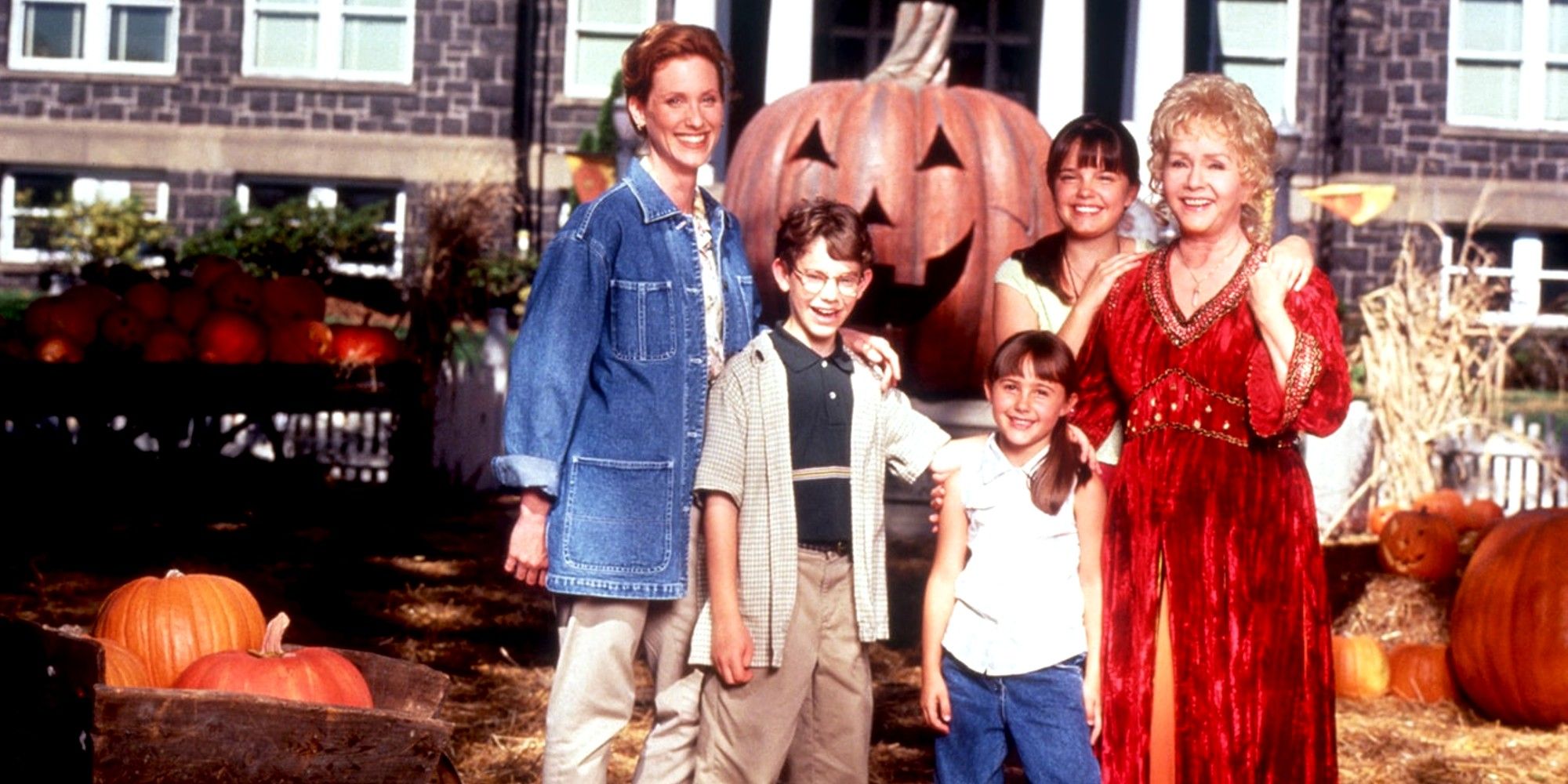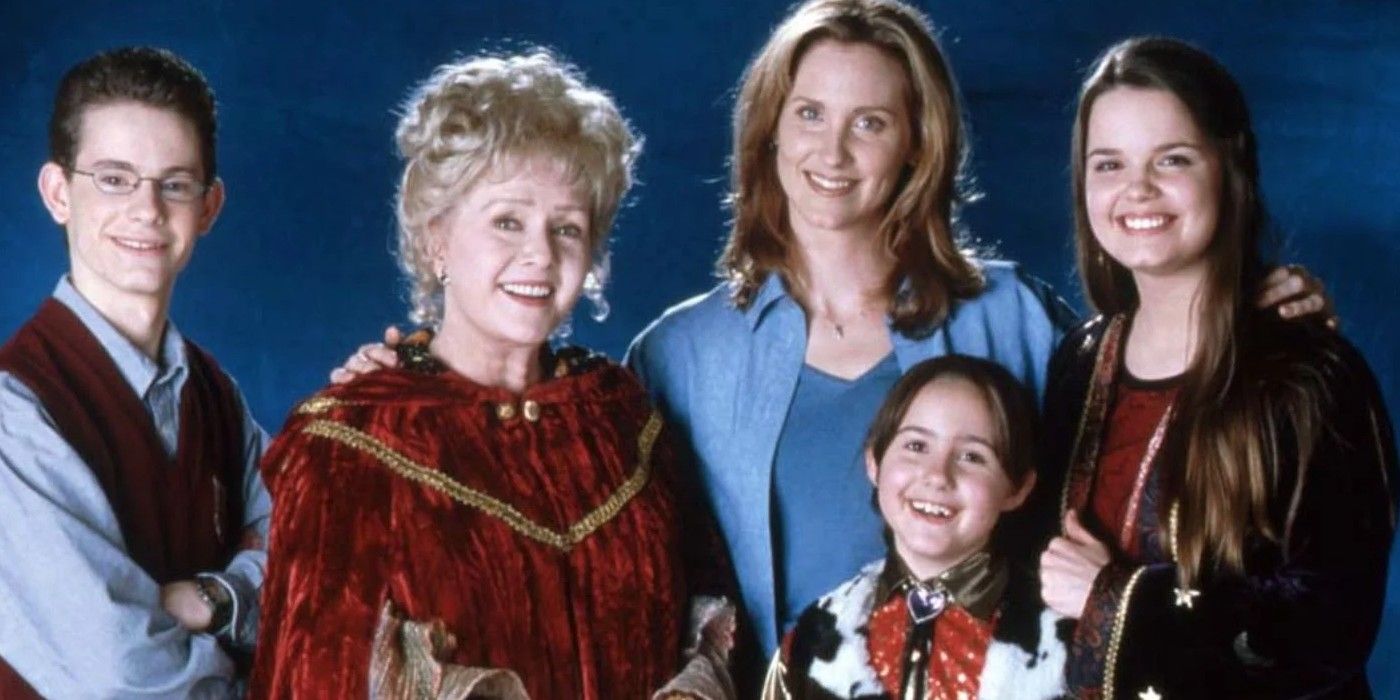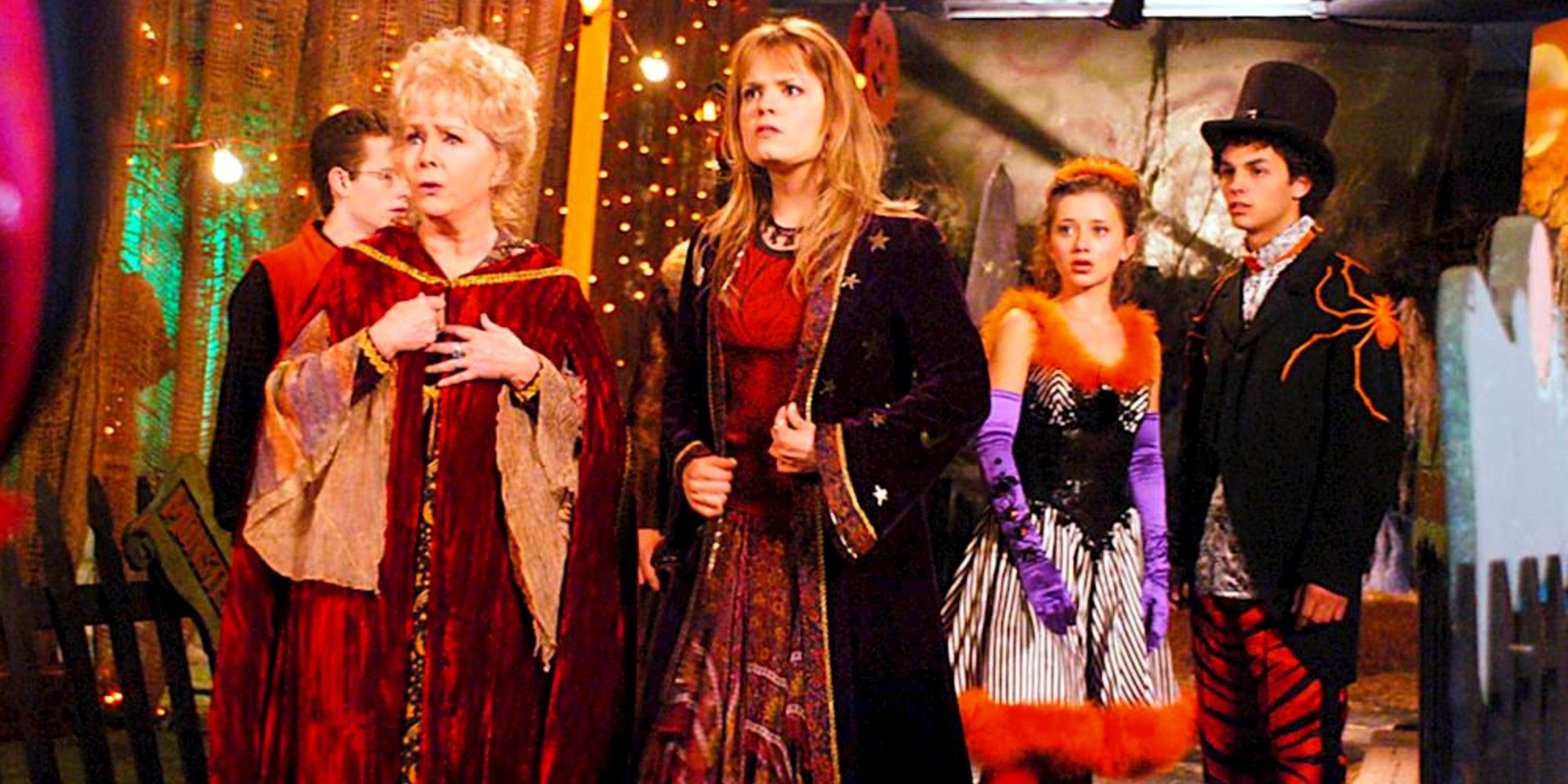Disney Channel's Halloweentown has become a cult favorite in the years since its release in 1998. Finding new life in yearly reruns, and now streaming on Disney+, the family movie has become an annual tradition for many. Halloweentown spawned three sequels and has even turned its filming location, St. Helens, Oregon, into a tourist attraction. The franchise has become an intrinsic part of the season, but the Halloweentown franchise is so much more than just another Halloween flick.
The first three movies follow Marnie Piper (Kimberly J. Brown) as she navigates adolescence and discovers she is a witch. With supporting actors such as Debbie Reynolds, playing Marnie's grandmother Aggie Cromwell, and Judith Hoag, playing Marnie's mother Gwen, the movies are a step above most made for TV films. The audience joins Marnie as she discovers Halloweentown and all of the magical creatures who call it home.
On first viewing, the movies appear as just another fun and faux-frightening romp for the Halloween season. However, on closer inspection, there is more to these family features than meets the eye. In the first movie, Grandma Aggie tells the audience that Halloweentown was created because mortals and monsters could not coexist. Mortals feared the monsters and treated them cruelly, and in response, the usually kind monsters attacked mortals.
Thus, Halloweentown was born. By creating another dimension, the monsters could live in peace in Halloweentown while mortals remained in their realm. This arrangement is presented as an ideal solution for the "problems" that were plaguing humanity; however it is really a form of segregation. This segregation causes a lot of issues for Marnie, who's born in the mortal realm to a human father, but her mother is a witch originally from Halloweentown.
From the first sequence in the original movie, Marnie is shown to be "othered." Her interest in the strange and unusual leaves her feeling out of place in a household in which all things out of the ordinary are shunned. It's revealed later that her mother forbids these things because she is actively hiding Marnie's witch heritage from her, further making the outcast Marnie feel confused and isolated. Throughout the franchise, Marnie continually challenges the norms that have governed Halloweentown and her own life because there doesn't seem to be a place for someone who is both mortal and witch.
These themes surrounding discrimination, societal pressure and otherness also appear in the second movie, Halloweentown II: Kalabar's Revenge, which has a haunting scene that highlight how turbulent the relationship between monsters and mortals can be. Kalabar's son, Kal (Daniel Kountz), plans a horrific attack on the mortal realm, continuing his father's mission to punish mortals for exiling monsters. At the high school's annual Halloween dance, Kal turns the humans into monsters in a twisted act of revenge. While Marnie realizes trusting Kal was a mistake, she also learns that she should question the existing rules that govern Halloweentown and the mortal world.
Kalabar's Revenge also focuses on Marnie's upcoming decision to spend a year in Halloweentown to train to be a witch. Given how time works differently in Halloweentown, this decision will define Marnie's future. Ultimately, when Marnie acknowledges that much of Halloweentown's foundation is built on outdated and discriminatory practices, she refuses to choose between her mortal life and her witch life. Instead, she destroys the barrier that separates Halloweentown from the mortal realm.
In light of this, the third installment to the franchise, Halloweentown High, has Marnie head up a student exchange program where teens from Halloweentown can attend school in the mortal realm. Throughout this film, fans see Marnie work to repair the divide that has plagued the realms for centuries. It also explores how the other monster students struggle with adjusting to a new society; however, it also sees them making their own place in the world and finally being accepted by mortals for who they really are.
At its core, the Halloweentown franchise is about fighting prejudice and dismantling outdated systems of oppression. Marnie rejects the notion of following nonsense rules simply because that is how things have always been done. She brings modern, at times revolutionary, ideas to Halloweentown and the mortal realm. These family films are fun to watch, have good messages and are a seasonal favorite, but beyond that, they represent a way to introduce tough topics to a young audience. Marnie's resilience and dedication to creating a more welcoming Halloweentown and mortal realm is something everyone can try to emulate in their own world.



